Tuesday, 5 May 2009
020509 Ming Tien Food Centre, Taman Megah, Malaysia
Somewhere near the centre of the Universe that is SS2 (in Malaysia, and if you’re not from there, you just won’t understand how much of a centre of the Universe this place is), there is a food court called Ming Tien. The literal translation is ‘Tomorrow’. Perhaps they were going for the ‘return customer’ angle when naming the business.
The ambience (perhaps a slightly pretentious word) here is that of a beach party, but with lots of food. Lots of tables, plastic chairs and a wireless button system where one press of the blue button results in a waiter coming to the table.
If only we had this at McDonald’s.
At this beach party, there are lots and lots of food stalls, each one selling a different thing. Mainly focusing on food of the Chinese variety, you can find almost every type of dish here. With your table number, you order the dish (i.e. Number of, spicy or not, what type of noodle) and the dish gets brought to your table.
Char Kuay Teow RM4
Known as the King of Noodles in Malaysia (lots of things are Kings of something so I wouldn’t take this too literally), this is a dish that everyone should try at least one (hundred) time(s). Made with ‘hor fun’ which is a flat rice noodle, and fried with eggs, prawns and beansprouts (added when it’s nearly ready to retain texture), this is a very popular dish among the locals, so much so that you just have to say CKT and people will know what you mean.
Hokkien Char (Thick noodle) RM5
‘Hokkien’ is another way of saying Fu Jian which is a place in China, and as this dish was originally made by the people who came to Malaysia from Fu Jian, this is known as Hokkien Char (‘char’ being ‘fried’). The default noodle used is the thick noodle, also known as the fat noodle which seems to be found only in Malaysia (and even then, only in certain states).
The colour of the dish comes from the thick, dark soy sauce which is a caramel-tasting, black sauce used to flavour as well as to colour certain foods. This noodle was one of the better ones I’d tasted, and for RM5 (GBP1 = RM5.30), we enjoyed it lots.
Hokkien Char (meehoon, or rice vermicelli) RM5
Same dish, but using a different type of noodle. You’ll be surprised at what a difference the type of noodle makes, as this is the main thing that decides how much sauce is absorbed by the noodle, thus how tasty it is. This dish had the potential to be really good, especially if it was just dry enough, and just charred enough with the taste of coal used in cooking it. This version wasn’t as good, as it lacked ‘wok hei’, which is translated literally as ‘heat of the wok’, and tasted more like it was stirred in sauce, rather than fried on hot heat in sauce.
Claypot curry fish head RM10 per pot
The name alone might need alot of explanation if you’ve never had this before. Claypots are pots made from clay which are used for cooking, as well as serving, because the cooking process takes a while to heat the pot up, after which it retains the heat for a long period of time. Much longer than other means of food serving, such as the glass plate.
Fish head is eaten (and very much liked) by Malaysians, and most of the people in South East Asia. Commonly seen as being cat’s food, or even worse by people living in the West, us South East Asian people love the delicate textures and tastes which can be found in the head of the fish. Obviously, to find anything in the head of the fish, the fish is going to have to be a big one.
This is a sour-ish curry, made with coconut milk, and tamarind (at a guess) to achieve the sour taste. Lots of vegetables and tofu puffs make up the rest of the dish.
Sarawak Kolo Mee RM4.50
It’s supposed to be pronounced ‘kon low mee’ which translates to dry-mixed noodle but somewhere along the line, the spelling and pronunciation seems to have taken a step back. Handmade noodles are ‘mixed’ or tossed in a sauce, and garnished with minced pork meat. Nothing remarkable here.
Ipoh Dry Curry Noodle RM4.50
This is yellow noodles, mixed with curry sauce, and one of our favourites here, but this time it wasn’t done that well so we didn’t finish it.
Although not every stall here serves the best versions of their dish, this is a popular place with the locals. Lots of space, lots of food, and a huge plasma TV showing the latest English football matches (real time) make it one of ours also.

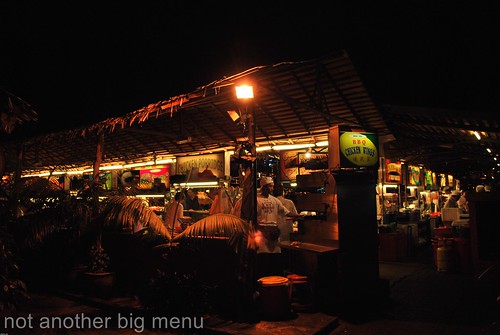
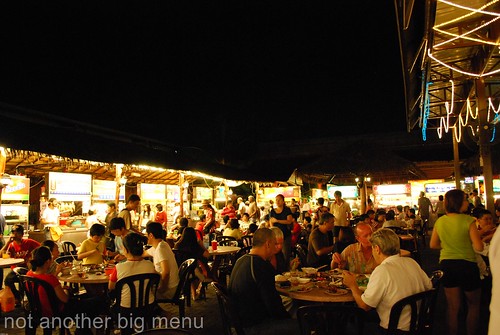
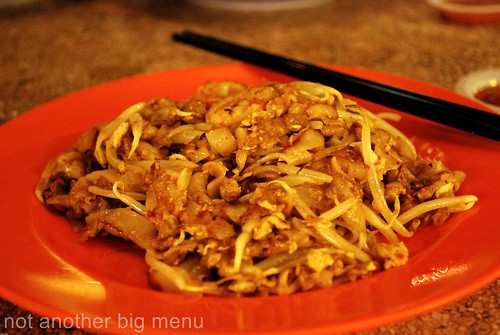
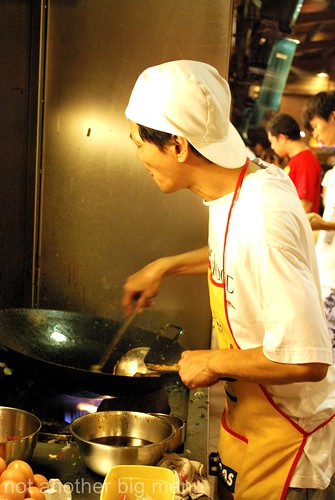

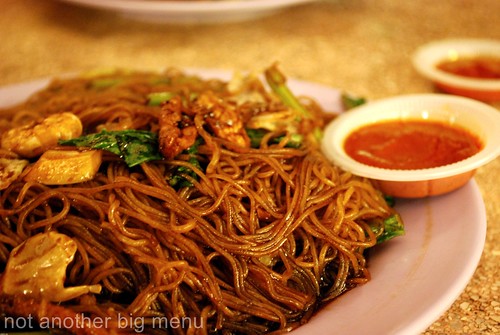
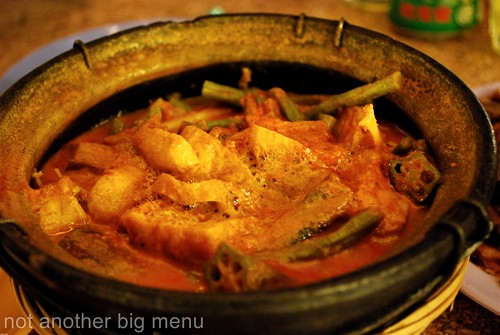
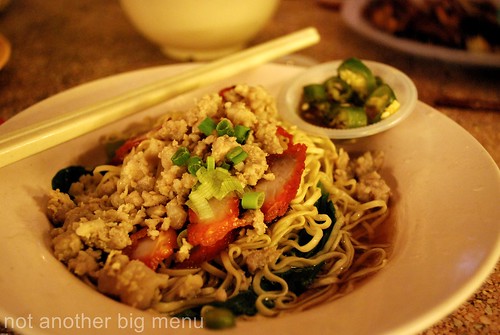
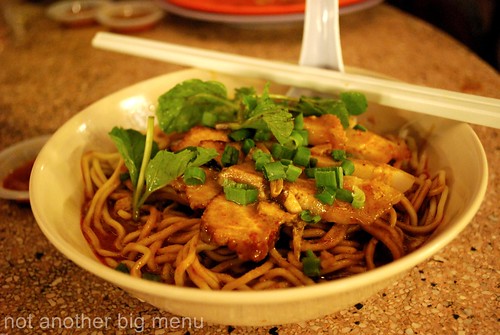
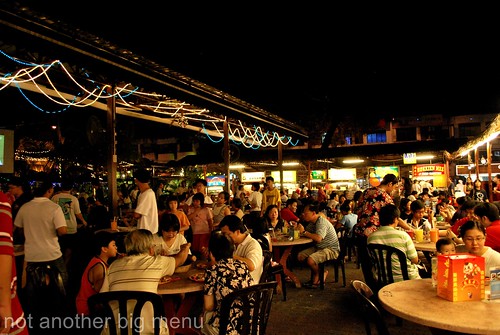

1 comment:
Mmmmmm, the food all looks good! But uh...I think that exchange rate should be the other way around!
Post a Comment